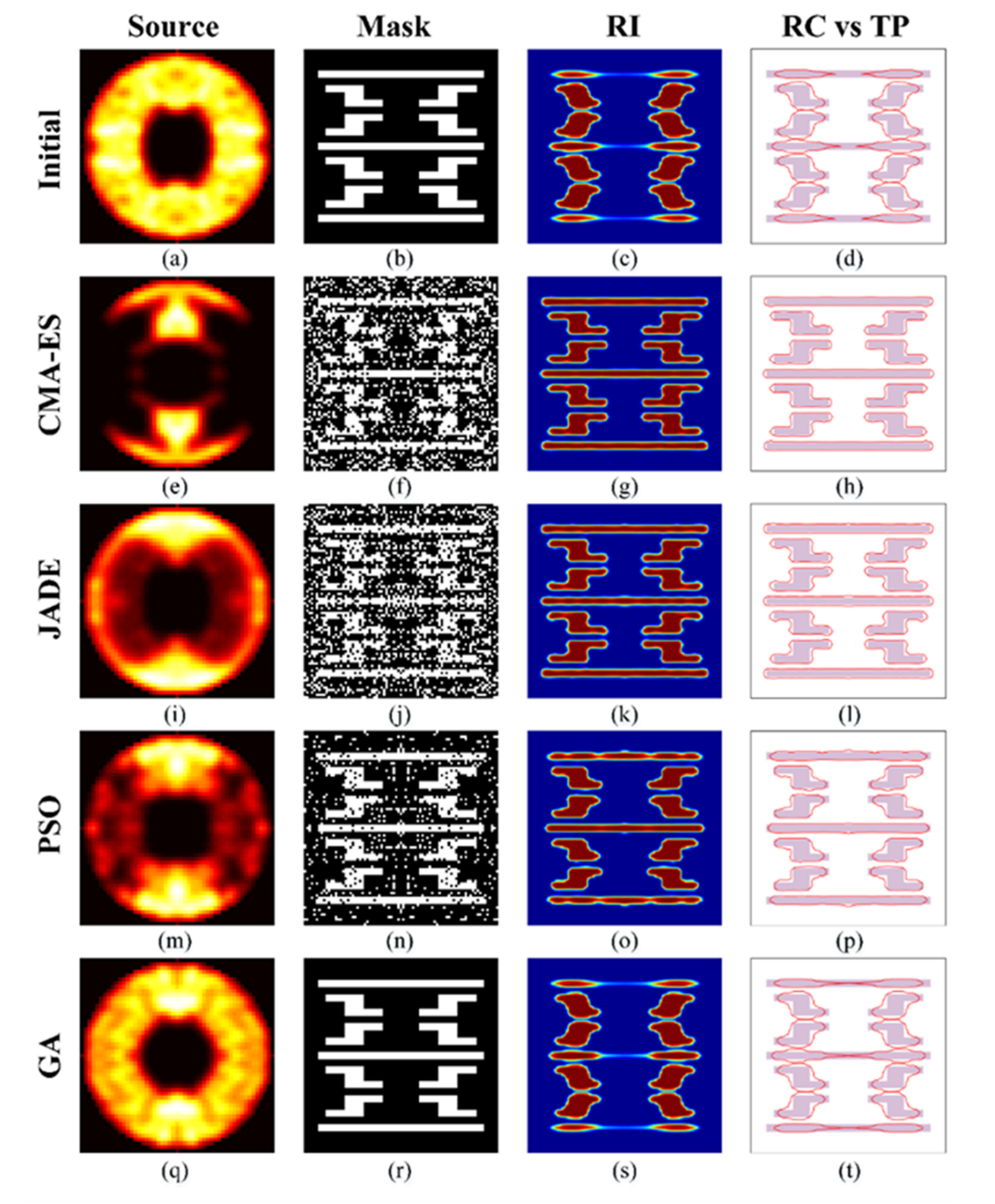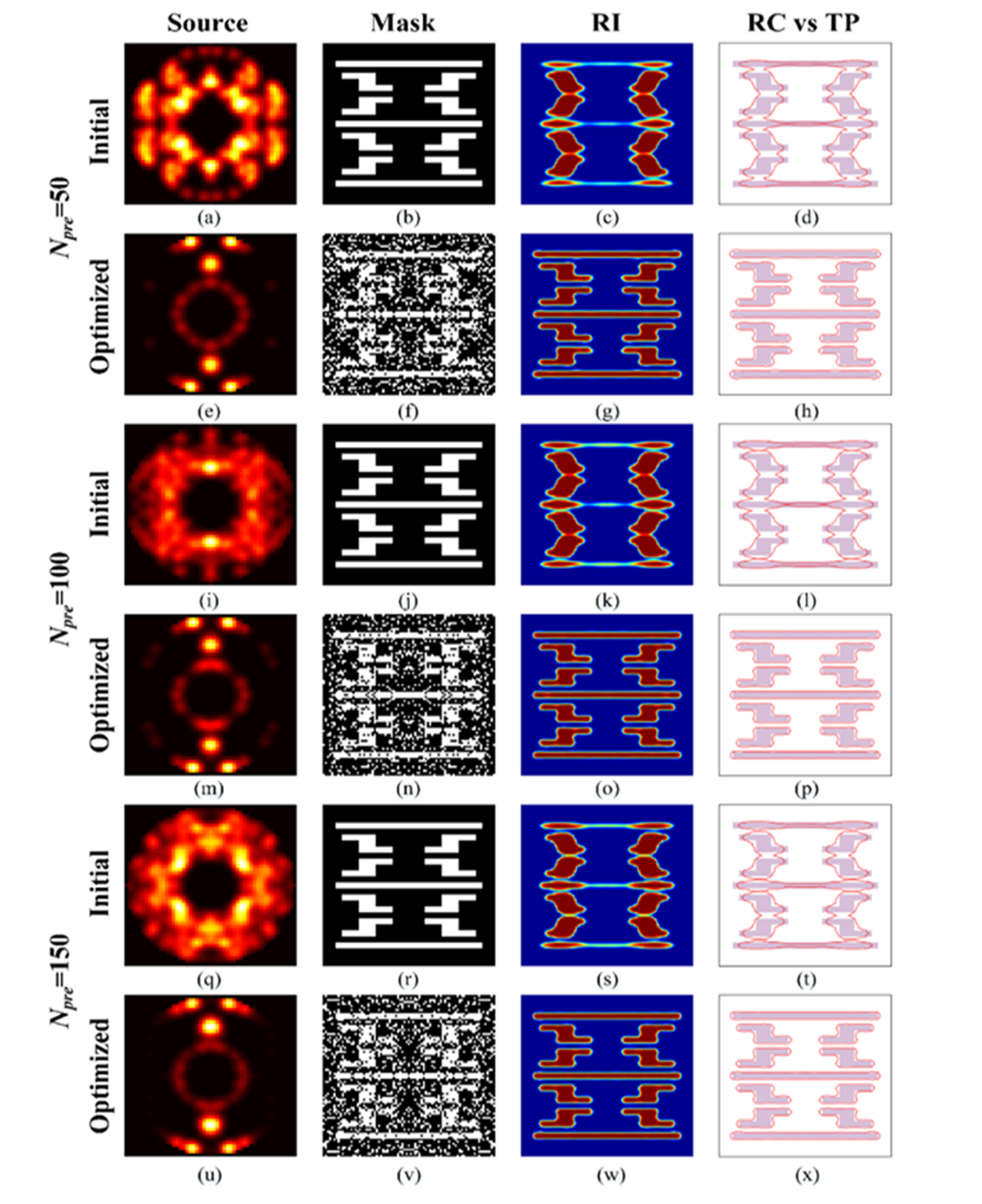Recently, Shanghai Institute of Optics and Fine Mechanics (SIOM), Chinese Academy of Sciences (CAS), has proposed a source mask optimization technique using the covariance matrix adaptation evolution strategy (CMA-ES) and a novel source representation method. Simulation results implicate that the proposed technique is prior to similar source mask optimization (SMO) techniques in optimization capacity and convergence efficiency.
Lithography is one of the key technologies in the fabrication of very-large-scale integrated circuits (VLSI). The lithographic resolution determines the critical dimension (CD) of the integrated circuits (ICs). With the continuous shrinking of CD of ICs, the significant optical proximity effects (OPEs) induced by the diffraction-limited property of the lithography systems degrade the lithographic imaging quality.
Computational lithography refers to the techniques that effectively improves the resolution and process window by optimizing the illumination source and mask pattern with mathematical models and optimization algorithms, without changing the hardware and software configurations of the lithography systems. Computational lithography is regarded as the new enabler of Moore’s Law.
SMO optimizes the illumination source and mask pattern simultaneously to improve imaging quality. It has become one of the critical computational lithography techniques to implement the IC fabrication at 28nm technology node and beyond.
The research group from SIOM proposed a source mask optimization technique using the CMA-ES and a novel source representation method. In SMO based on CMA-ES, the covariance matrix indicating the solution search space distribution is adaptively adjusted with rank-1 and rank-μ mechanisms, enabling the superior solutions to reappear with larger probabilities in later generations.
Moreover, the range of the solution search space is updated through the control of the global search step size. The source is represented with a predetermined number of ideal point sources with unit-intensity and adjustable positions. Source optimization is realized by optimizing the point sources’ positions.
The simulation results under different source representations and various mask patterns verify the superiority of the proposed technique in optimization capacity and convergence efficiency than SMO techniques based on heuristic algorithms.
The research is supported by the National Major Science and Technology Projects of China (2017ZX02101004-002, 2017ZX02101004) and Natural Science Foundation of Shanghai (17ZR1434100).

Fig.1. Comparison between the simulation results of different SMO techniques. (Image by SIOM)

Fig.2. Results of SMO using CMA-ES with the source represented by three different numbers of point sources. (Image by SIOM)
Article website:
https://www.osapublishing.org/oe/fulltext.cfm?uri=oe-28-22-33371&id=441841
Contact:
Mr. Wu Xiufeng
General Administrative Office
Shanghai Institute of Optics and Fine Mechanics, CAS
Email: xfwu@siom.ac.cn